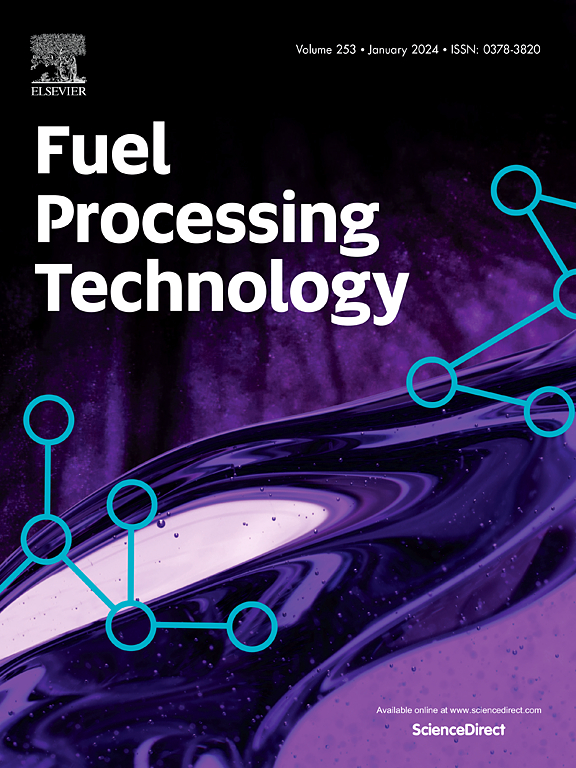Environmental and techno-economic analyses of oxygen blast furnace systems integrated with carbon capture and utilization strategy
IF 7.7
2区 工程技术
Q1 CHEMISTRY, APPLIED
引用次数: 0
Abstract
For mitigating net CO2 emissions of the oxygen blast furnace (OBF) system, the top gas recycling by connecting a Monoethanolamine (MEA)-based CO2 capture process as Scenario 1 (OBF + CC) and a carbon capture and utilization (CCU) process as Scenario 2 (OBF + CCU) is proposed. Scenario 2 utilizes a Triethylene glycol (TEG) physical absorption process for producing an industrial-grade 99.999 % purity liquid CO2 product. Carbon tracking in Aspen Plus indicates that Scenario 2 achieves significantly lower CO2 emissions with 4.1 kg CO2/tHM than Scenario 1 with 770 kg CO2/tHM. To synergize Aspen Plus® modeling and environmental impact assessment using SimaPro®, Scenario 2 has a lower impact on eutrophication potential, acidification potential, water depletion, and fossil resource depletion as compared to Scenario 1. Techno-economic analysis of Scenario 2 indicates that the liquid CO2 product generates a potential profit of 973.95 USD/tHM, which fully offsets the CO2 production cost of 378.33 USD/tHM in the CCU process.
结合碳捕获与利用策略的氧鼓风炉系统的环境与技术经济分析
为了减少氧高炉(OBF)系统的净CO2排放,提出了将基于单乙醇胺(MEA)的CO2捕集工艺作为场景1 (OBF + CC),将基于碳捕集与利用(CCU)工艺作为场景2 (OBF + CCU)的顶气回收。方案2利用三甘醇(TEG)物理吸收工艺生产纯度为99.999%的工业级液态CO2产品。Aspen Plus的碳跟踪表明,情景2的二氧化碳排放量为4.1 kg CO2/tHM,显著低于情景1的770 kg CO2/tHM。为了将Aspen Plus®模型和SimaPro®环境影响评估协同起来,与情景1相比,情景2对富营养化潜力、酸化潜力、水资源枯竭和化石资源枯竭的影响较小。情景2的技术经济分析表明,液态CO2产品产生的潜在利润为973.95 USD/tHM,完全抵消了CCU工艺中378.33 USD/tHM的CO2生产成本。
本文章由计算机程序翻译,如有差异,请以英文原文为准。
求助全文
约1分钟内获得全文
求助全文
来源期刊

Fuel Processing Technology
工程技术-工程:化工
CiteScore
13.20
自引率
9.30%
发文量
398
审稿时长
26 days
期刊介绍:
Fuel Processing Technology (FPT) deals with the scientific and technological aspects of converting fossil and renewable resources to clean fuels, value-added chemicals, fuel-related advanced carbon materials and by-products. In addition to the traditional non-nuclear fossil fuels, biomass and wastes, papers on the integration of renewables such as solar and wind energy and energy storage into the fuel processing processes, as well as papers on the production and conversion of non-carbon-containing fuels such as hydrogen and ammonia, are also welcome. While chemical conversion is emphasized, papers on advanced physical conversion processes are also considered for publication in FPT. Papers on the fundamental aspects of fuel structure and properties will also be considered.
 求助内容:
求助内容: 应助结果提醒方式:
应助结果提醒方式:


